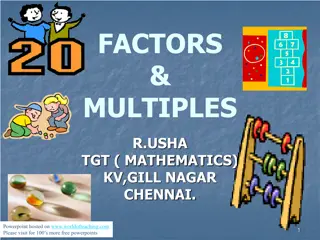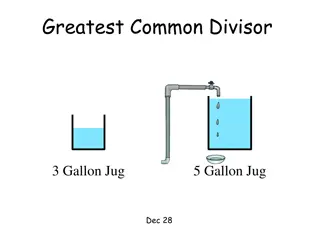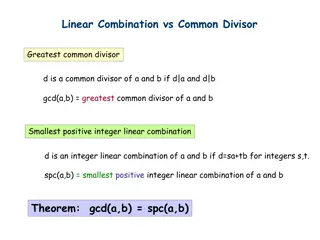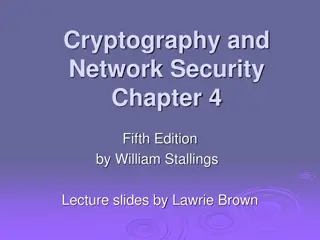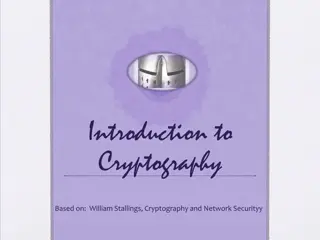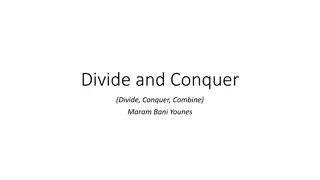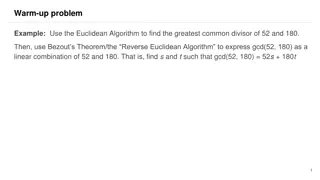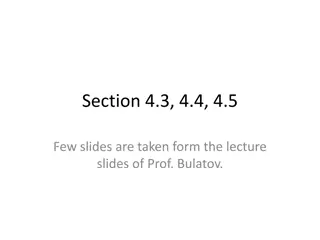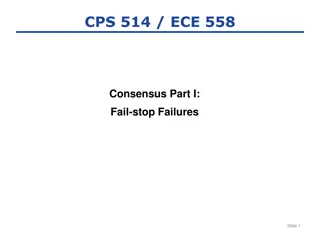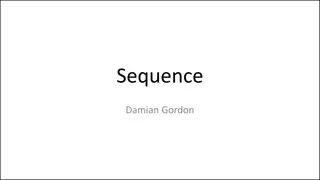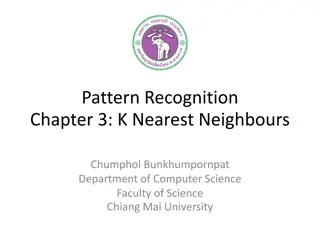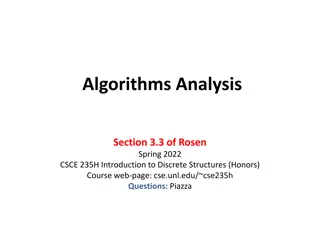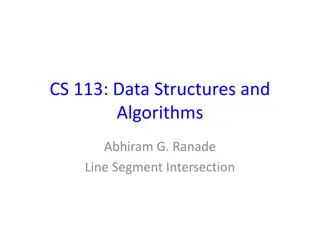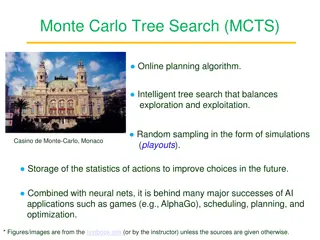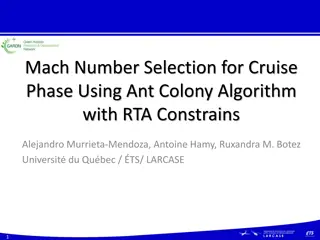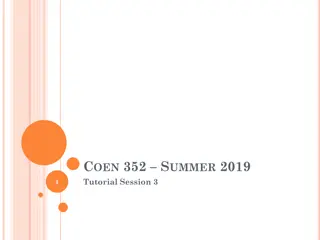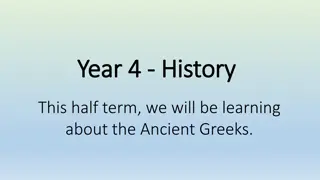Understanding Euclid's Algorithm: An Ancient Approach to Finding Greatest Common Divisors
Euclid's Algorithm, dating back 2500 years, offers a simpler method to find the greatest common divisor (gcd) of two non-negative integers compared to traditional factorization. By iteratively applying a rule based on the gcd of remainders, it efficiently computes gcd values. The basis of the algorithm lies in the iterative calculation involving positive integers x and y, eventually leading to the gcd without directly factoring the numbers. This ancient algorithm showcases the beauty of mathematical problem-solving techniques that have stood the test of time.
Download Presentation

Please find below an Image/Link to download the presentation.
The content on the website is provided AS IS for your information and personal use only. It may not be sold, licensed, or shared on other websites without obtaining consent from the author. Download presentation by click this link. If you encounter any issues during the download, it is possible that the publisher has removed the file from their server.
E N D
Presentation Transcript
MA/CSSE 473 Day 06 Euclid's Algorithm
MA/CSSE 473 Day 06 Student Questions Odd Pie Fight Euclid's algorithm (if there is time) extended Euclid's algorithm
Quick look at review topics in textbook REVIEW THREAD
Odd Pie fight solution The base case is easy: If n = 3 the two persons with the smallest pairwise distance between them throw at each other, while the third person throws at one of them (whoever is closer). Therefore, this third person remains unharmed . For the inductive step, assume that the assertion is true for odd n 3, and consider n + 2 persons. Again, the two persons with the smallest pairwise distance between them (the closest pair) throw at each other. Consider two possible cases as follows. If the remaining n persons all throw at one another, at least one of them remains unharmed by the inductive assumption. If at least one of the remaining n persons throws at one of the closest pair, among the remaining n 1 persons, at most n 2 pies are thrown at one another, and hence at least one person must remain unharmed because there is not enough pies to hit everybody in that group. This completes the proof.
Euclid's Algorithm Heading toward Primality Testing ARITHMETIC THREAD
Euclid's Algorithm: the problem One of the oldest known algorithms (about 2500 years old) The problem: Find the greatest common divisor (gcd) of two non-negative integers a and b. The approach you learned in elementary school: Completely factor each number find common factors (with multiplicity) multiply the common factors together to get the gcd Finding factors of large numbers is hard! A simpler approach is needed
Euclid's Algorithm: the basis Based on the following rule: If x and y are positive integers with x y, then gcd(x, y) = gcd(y, x mod y) Proof of Euclid's rule: It suffices to show the simpler rule gcd(x, y) = gcd(y, x - y) since x mod y can be obtained from x and y by repeated subtraction Any integer that divides both x and y must also divide x y, so gcd(x, y) gcd(y, x y) Any integer that divides both y and x - y must also divide x, so gcd(y, x-y) gcd(y, x) Putting these together: gcd(y, x-y) = gcd(y, x)
Euclid's Algorithm: the algorithm Example: euclid(60, 36) Does the algorithm work? How efficient is it?
Euclid's Algorithm: the analysis Lemma: If a b, then a % b < a/2 Proof If b a/2, then a % b < b a/2 If b > a/2, then a % b = a b < a/2 Application After two recursive euclid calls, both a and b are less than half of what they were, (i.e. reduced by at least 1 bit) Thus if a and b have k bits, at most 2k recursive calls are needed. Each recursive call involves a division, (k2) Thus entire algorithm is at most k2 * 2k, which is in (k3)
Euclid's Algorithm: practical use Divide 210 by 45, and get the result 4 with remainder 30, so 210=4 45+30. Divide 45 by 30, and get the result 1 with remainder 15, so 45=1 30+15. Divide 30 by 15, and get the result 2 with remainder 0, so 30=2 15+0. The greatest common divisor of 210 and 45 is 15.
gcd and linear combinations Lemma: If d is a common divisor of a and b, and d = ax + by for some integers x and y, then d = gcd(a,b) Proof By the first of the two conditions, d divides both a and b. No common divisor can exceed their greatest common divisor, so d gcd(a, b) gcd(a, b) is a common divisor of a and b, so it must divide ax + by = d. Thus gcd(a, b) d Putting these together, gcd(a, b) = d If we can, for any given a and b, find the x and y as in the lemma, we have found the gcd. It turns out that a simple modification of Euclid's algorithm will allow us to calculate the x and y.
Extended Euclid Algorithm Proof that it works I decided that it is a bit advanced for students who may have just seen Modular Arithmetic for the first time yesterday. If you are interested, look up extended Euclid proof We ll do a couple of convincing examples.
Forward-backward Example: gcd (33, 14) 33 = 2*14 + 5 14 = 2 * 5 + 4 5 = 1 * 4 + 1 4 = 4 * 1 + 0, so gcd(33, 14) = 1. Now work backwards 1 = 5 - 4. Substitute 4 = 14 - 2*5. 1 = 5 (14 - 2*5) = 3*5 - 14. Substitute 5 = 33 - 2*14 1 = 3(33 - 2*14) -14 = 3 * 33 7 * 14 Thus x = 3 and y = -7 Done!
Another example (same computation, different order): gcd (97, 20) 97 = 4 20+17 20 = 1 17+3 17 = 5 3+2 3 = 1 2+1 so GCD is 1. Now figure out the x and y 17 = 1 97-4 20 20-1 17 = 3 so 3 = 1 20-1 17 = 1 20-(1 97-4 20) = -1 97+5 20 17=5 3+2 so 2 = 17-5 3 = (1 97-4 20)-5(-1 97+5 20) = 6 97-29 20 1 = 3-2 = (-1 97+5 20)-(6 97-29 20) = -7 97+34 20 Thus x = -7 and y = 34 Done!


